If there is one European country destined to tantalize your taste buds,it is Italy! 
Not here! Below is a list of (some) ‘must eat’ Roman classics.
Spaghetti alla Carbonara 🥚
Let’s start with one of my personal favorites, the carbonara! This salty, cheesy yet smokey pasta dish is traditionally made with eggs, Pecorino Romano cheese, guanciale (cured pork cheek) and black pepper. The fatty guanciale 🥓 (similar to pancetta) is a key ingredient, making the sauce creamy when mixed with the eggs and starchy pasta water. Some variations use Parmesan Grana Padano or a mix of cheeses.
It’s the culinary proof that less is more!
🍽️Where to eat it: Try Roscioli Salumeria (bakery, Italian deli and restaurant in the historic center) and Armando al Pantheon (historic trattoria with classic Roman dishes).
Pasta Amatriciana 🍝
Next up, the pasta I saw most frequently advertised on the dating apps as being the Roman mens’ ‘best dish’ ‘: Amatriciana. Featuring the same rich guanciale, it combines salty Pecorino Romano cheese, sweet tomatoes and heat from chili pepper 🌶️ into a bowl of perfectly balanced flavors. It’s tomato-y, but not saucy; fatty rather than greasy; and spicy without being piquant. You’ll most likely get it served with bucatini, a thick spaghetti-like pasta with a hole running through the center.
As the fiery color of the sauce suggests, this pasta simply tastes sexy.
🍽️Where to eat it: try one of the restaurants mentioned above, or Trattoria Vecchia Roma (nearby Piazza Vittorio Emanuele), Flavio al Velavevodetto (Testaccio district), L’Arcangelo (center, Prati area)
Pasta Cacio e Pepe 🧀
Never throw away your pasta water! The last pasta dish I want to highlight is made with just three ingredients: aged Pecorino Romano cheese, freshly ground black pepper and starchy pasta water ( pasta of choice, usually spaghetti)! The water mixes with the proteins in the cheese to form a creamy sauce that is itchy in flavor thanks to whole crushed peppercorns and slow, controlled whisking of the pasta. As simple as the ingredient list may sound, it takes a splash of Italian technique to not turn the sauce into a sticky, clumpy disastro.
The ultimate comfort food with a sprinkle of boldness. 😎
🍽️Where to eat it: again, try one of the restaurants above, or Nannarella (Trastevere), Trattoria da Felice (Testaccio), Osteria da zi Umberto (Trastevere)
Carciofi alla Romana (Roman-Style Artichokes) 🌳
Round and soft, without spines, the quality of Romanesco artichokes shines through in this fresh veggie dish. Originating in the Jewish ghetto of Rome, it was traditionally served by Jewish restaurants during the springtime 🌷. The artichokes are cooked with garlic, mint and parsley, often roasted or braised.
Fresh, seasonal artichokes are available from February to April/May. I promise, even kids will love this!
🍽️Where to eat it: Da Enzo al 29 (Trastevere), Piperno, & Da Giggetto (both in the Jewish Ghetto, near the Tiber river)
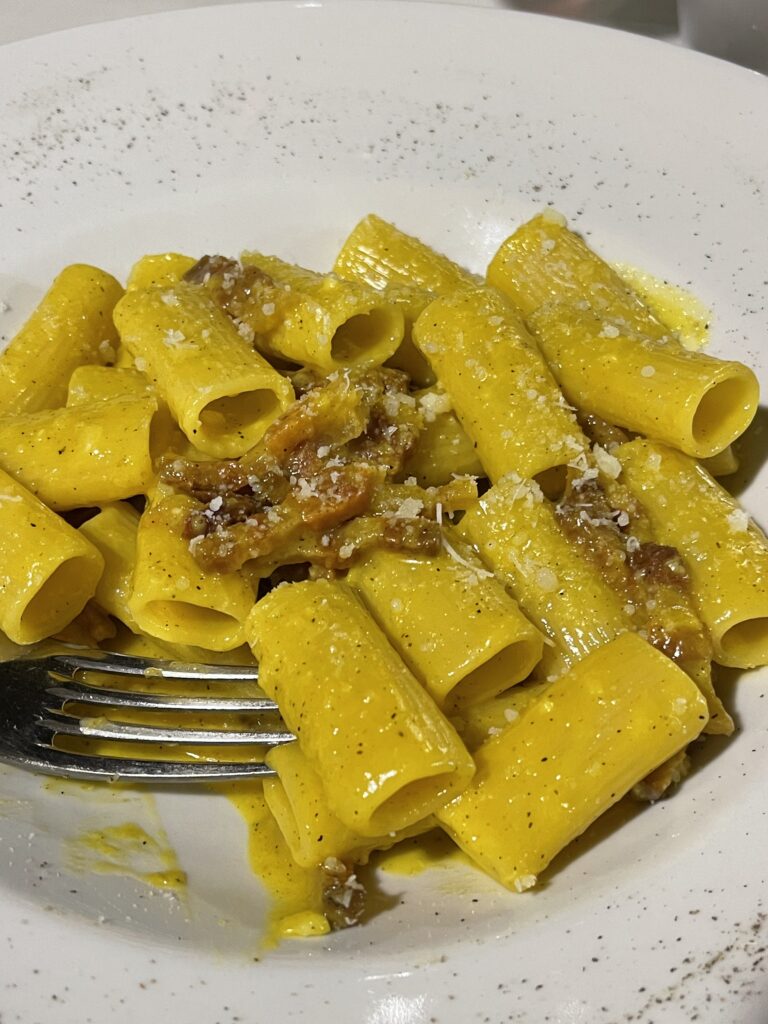
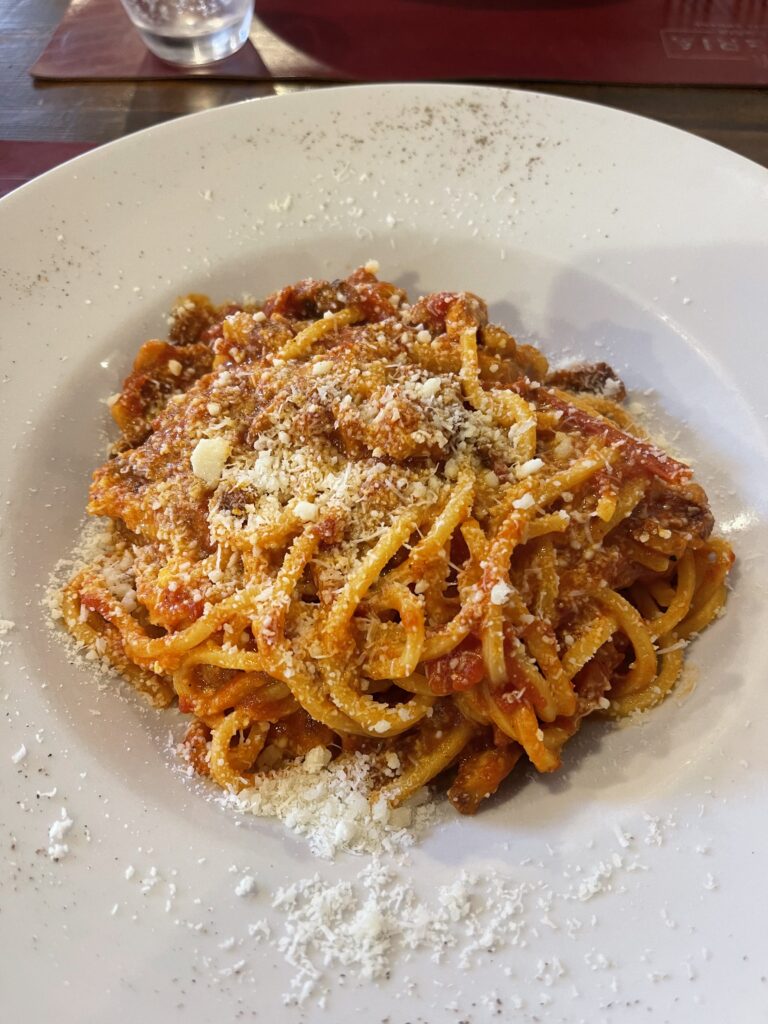
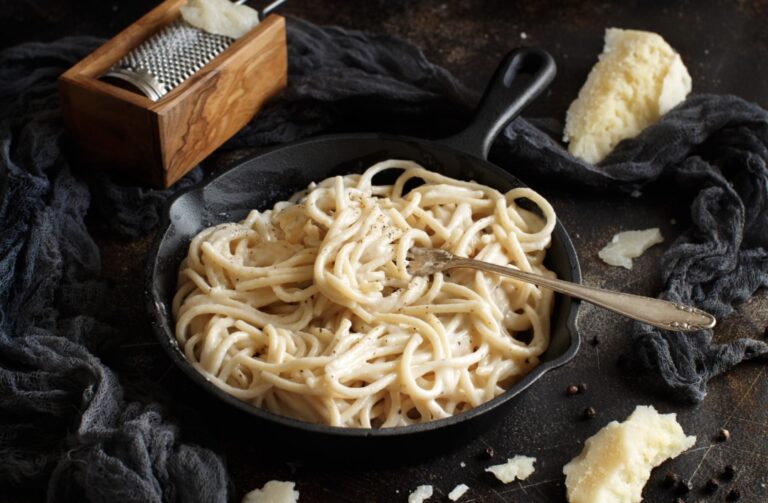
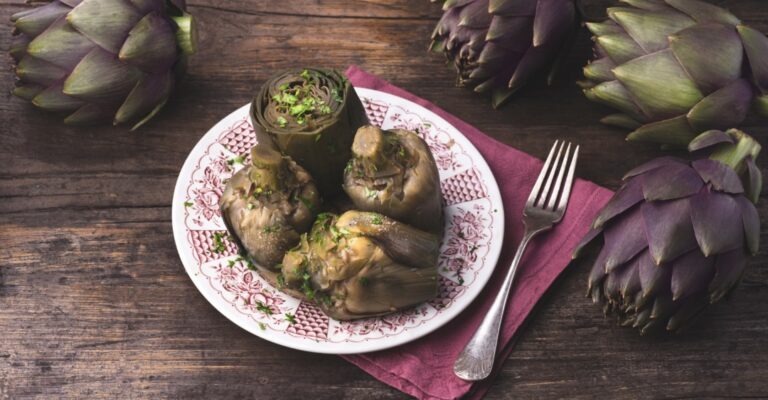
Suppli & Fiori di Zucca 🍘
I believe that every country has its own variations of fried specialities (ok, except maybe Vatican City), and Rome adds (at least) two delicious options to the Italian list: suppli and fiori di zucca.
Suppli, deep-fried rice balls 🍙 with a filling, are popular street food in Rome. They are most often filled with stringy mozzarella, whose flavor complements the rice , typically mixed with tomato sauce.
Fiori di Zucca are the edible flowers of the zucchini (courgette) plant 🌼. They can be used in various ways, but a popular option is to stuff and then fry them. The stuffing may include ricotta cheese, herbs or anchovies.
Whichever you try, after 20,000 steps, there’s surely no need to feel guilty about indulging in these crispy, golden delights!
🍽️Where to eat it: For (1) suppli, try La Casa dei Supplì (Trastevere), Dar Filettaro (Campo di Fiori), Supplizio (historic center), Pizzarium (near Vatican City), Trapizzino (multiple locations) For fiori di zucca (2) La Taverna del Ghetto (Jewish Ghetto), Da Gino alla Villetta (Trastevere)
Trippa alla Romana 🐄
Sounds trippy, and if you ask me, it kind of is. This dish showcases a Roman preparation of tripe, the edible lining of the stomach of various animals (in this case usually beef). It is commonly eaten on Saturdays for lunch in the alleys of Trastevere and Testaccio districts and considered a staple of Rome’s so-called fifth-quarter cuisine, which highlights the less desired remains of animal insides.
The tripe is slowly cooked with various herbs (such as pennyroyal leaves and cloves), tomato sauce and other ingredients like Pecorino Romano cheese, white wine, onions, celery and garlic to add a dimensional palette of flavor.
I have to give it to them: the unique chewy texture of the tripe is worth stepping out of your comfort zone for!
🍽️Where to eat it: Zampagna (east of Tiber river), Checchino dal 1887 (Testaccio), Armando al Pantheon, Da Enzo al 29 (earlier-mentioned)
Saltimbocca alla Romana 🔪
Meat-lovers, pay attention – there’s a dish about to jump in your mouth! Saltimbocca features thinly sliced veal, typically wrapped or topped with prosciutto and sage leaves. It’s then sautéed in butter and white wine, resulting in tender and flavorful meat.
In case you didn’t get the pun: Saltimbocca translates to ‘jump in the mouth’! No need to avoid this leap of faith!
🍽️Where to eat it: Saltimbocca (yes, same name, near Piazza Navona), La Matricianell (near Spanish Steps)
Maritozzo con la Panna ☁️
Let’s finish it off with a sweet bang! This soft pastry bun can be devoured for breakfast (most common) or dessert 🍞. Crafted from a delicately sweet brioche dough enriched with eggs, butter and sugar, it is split open in the middle and filled with a generous amount of (flavored) fluffy whipped cream!
Fun fact: the name ‘maritozzo’ is thought to come from the italian word ‘marito; meaning ‘husband’. According to legends, young, unmarried women prepared their best versions of the buns to offer them to potential suitors. However, young men brought the sweet rolls, decorated with sugar hearts and hiding a gold jewel, as a gift to their brides-to-be on the first Friday of March, then Valentine’s day.
Dio mio, now that’s savoring ‘amore’ with every bite! 💓
🍽️Where to eat it: Antico Forno Roscioli (bakery, near Campo di Fiori), Pasticceria Regoli (pastry shop near Termini station), Il Maritozzaro (shop in Trastevere) , Il Maritozzo Rosso (trastevere, known for their creative spins on the classic)
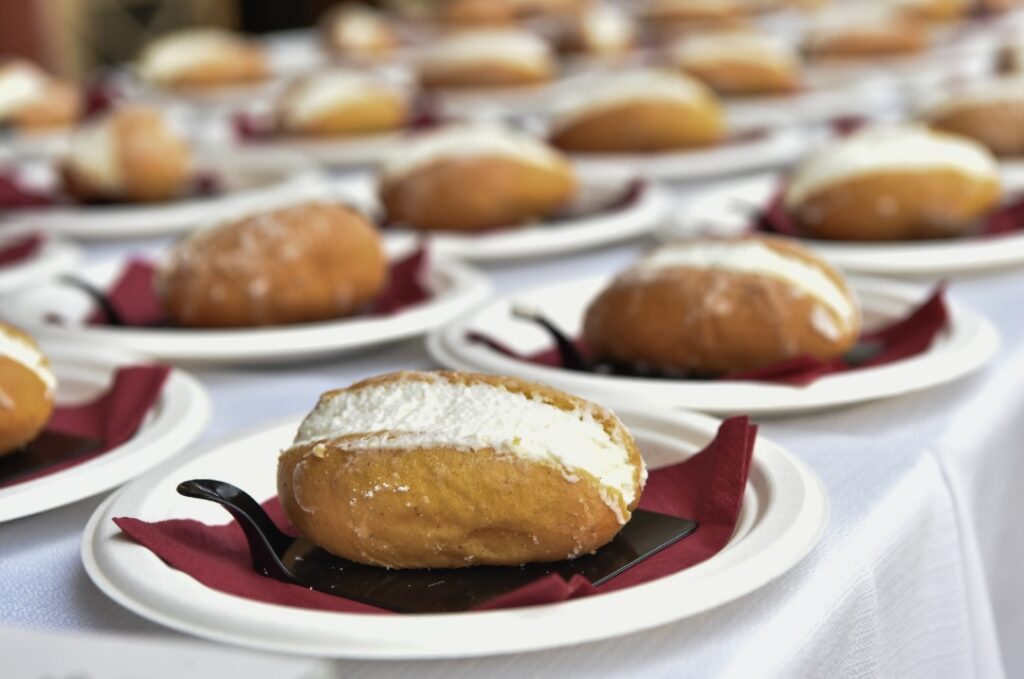
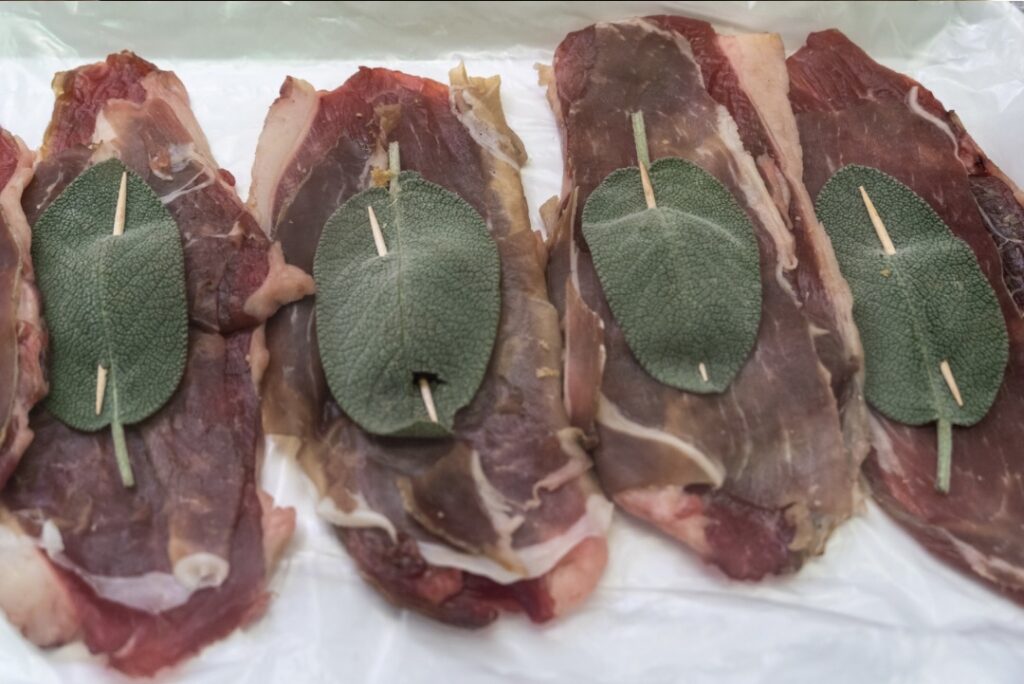
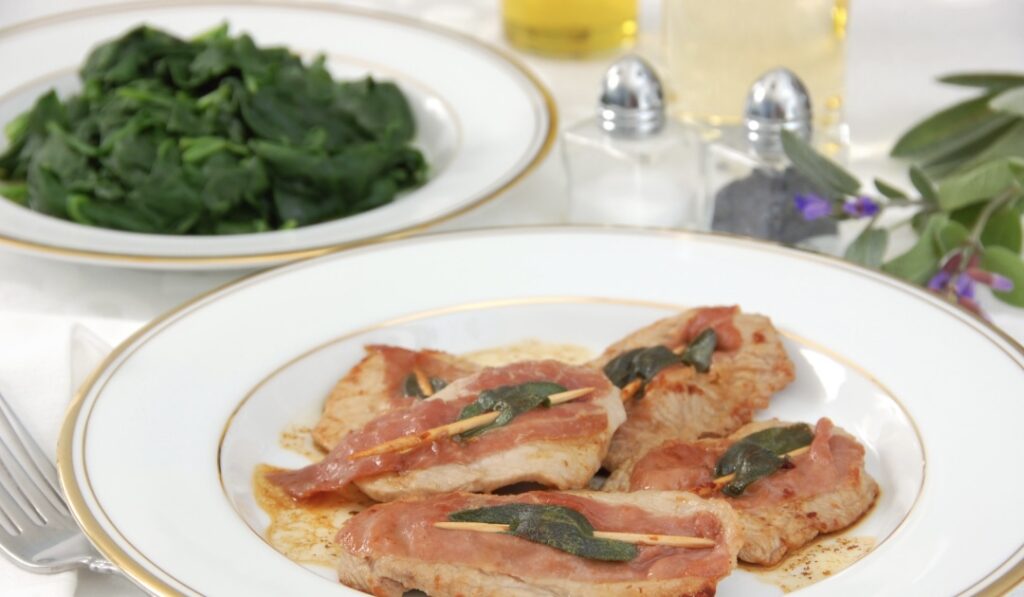
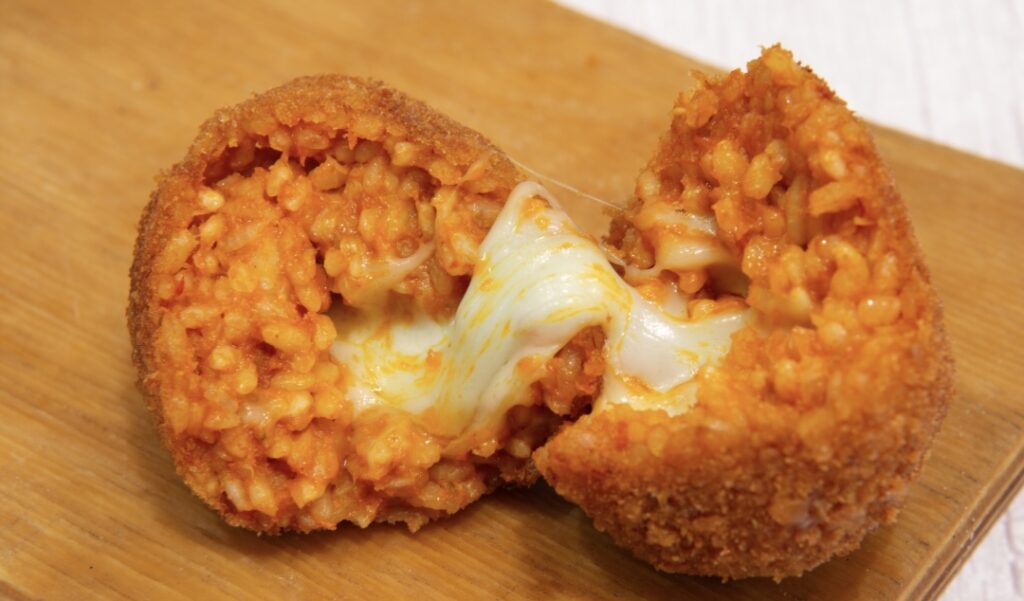
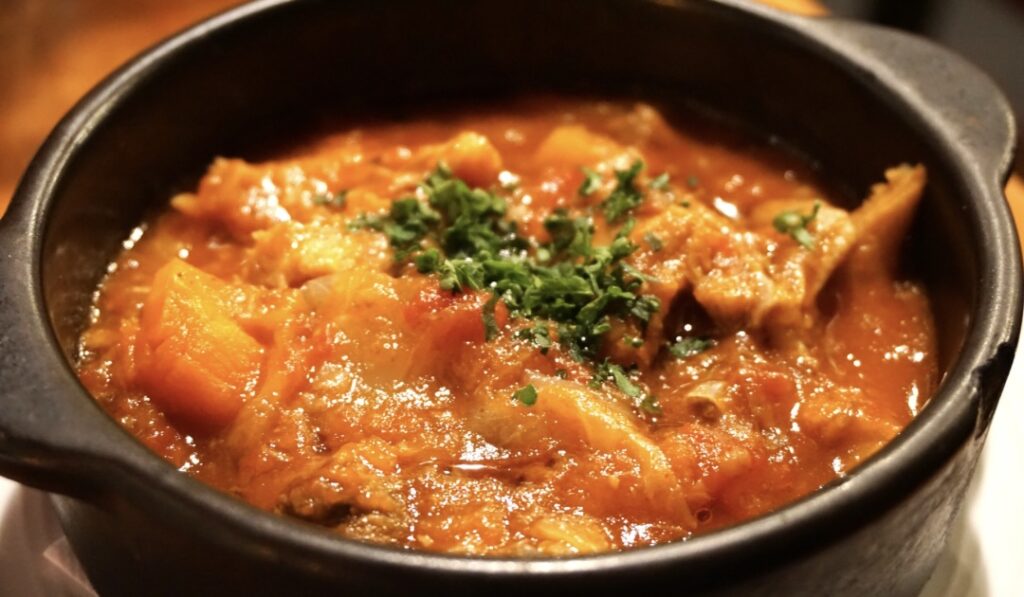
Buon appetito!

Additional Restaurant Tips









